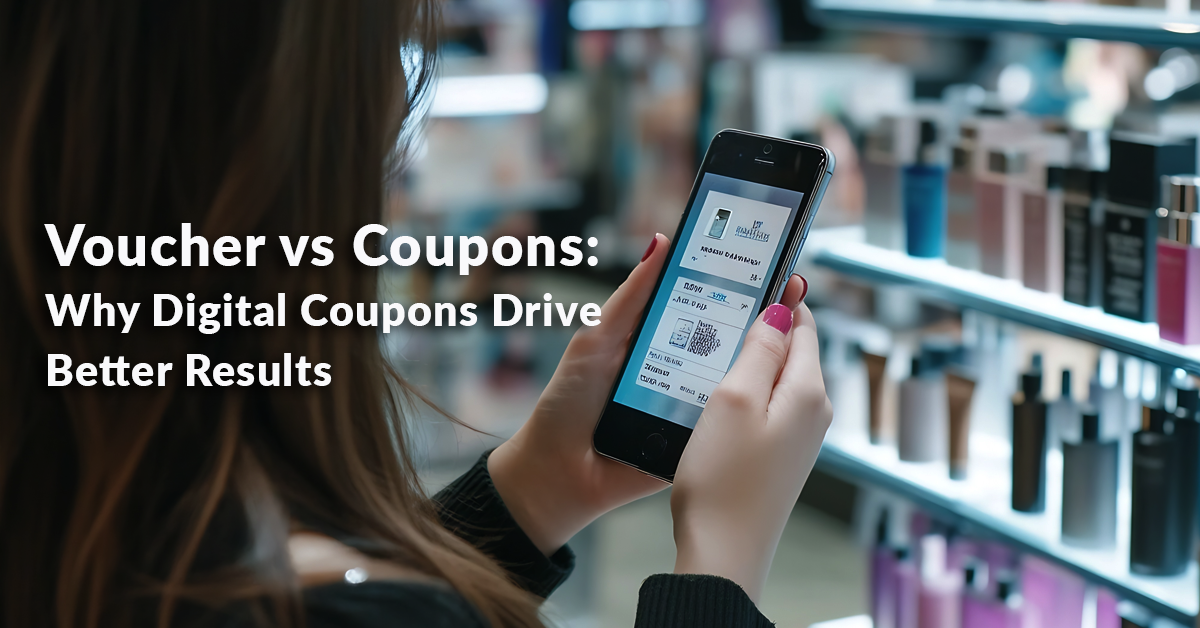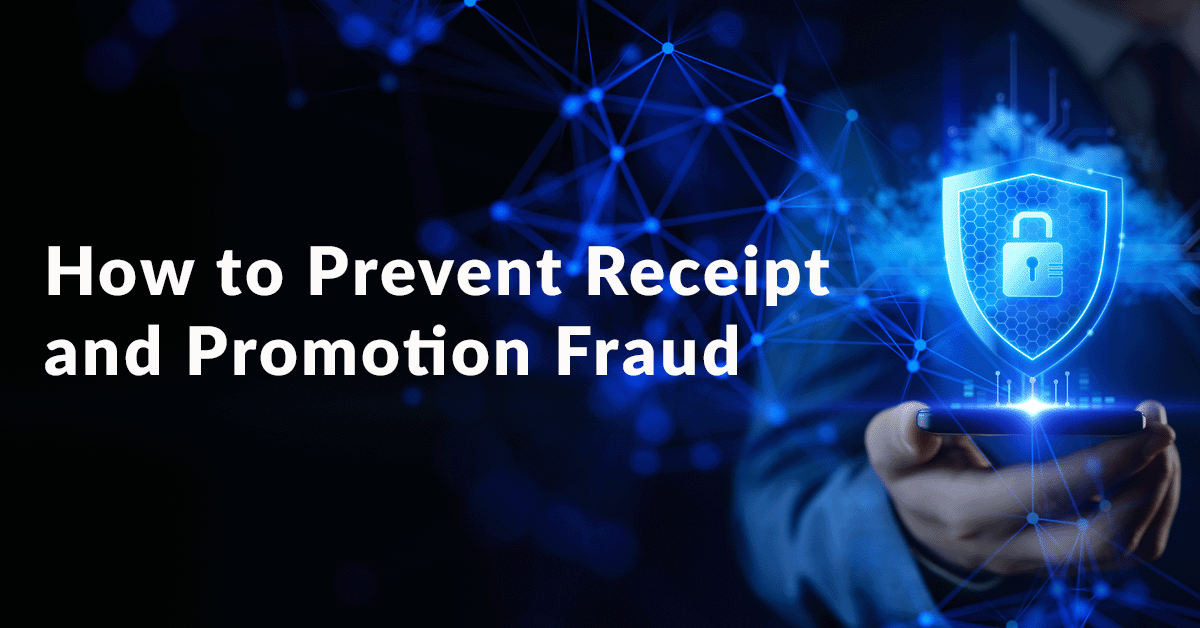One retailer nearly let £18 million in loyalty rewards expire overnight. Another delivered 260 million dynamic offers each week – personalized by AI and redeemed automatically.
The difference? It comes down to how they use vouchers versus digital coupons.
Mind the wording: what we mean by“voucher”and “coupon”
In the U.S., “coupon” is the familiar term. Shoppers associate it with discounts, deal-hunting, and weekly offers. In the UK, “voucher” is more common, especially in grocery and travel.
While marketers can (and should) tailor terminology – “voucher” for UK shoppers, “coupon” for U.S. users, or “promo code” for a global audience – it’s not just a regional, linguistic difference. It’s functional:
- Vouchers are typically fixed-value instruments (“£/$10 off your next shop”)
- Coupons are dynamic, time-bound triggers that spark behavior and track results.
If you’re deciding where your promo dollars go next, here’s why the balance is tilting toward digital coupons:
1. Vouchers Sit. Coupons Sell.
Last year, Tesco made headlines when £18 million in unredeemed Clubcard vouchers were about to expire. These weren’t surprise rewards. UK shoppers had spent months collecting points and converting them into vouchers. But because the value was stored in advance and had to be remembered later, a huge chunk of it went unclaimed. That’s lost potential: no sales lift, no loyalty bump, and likely, some disappointed customers.
Compare that to how Sainsbury’s and Kroger approach promotions:
![]()
Sainsbury’s uses its Nectar app to drop up to ten personalized offers to UK shoppers every Friday. No clipping. No remembering. In 2024, this engine delivered 260 million personalized offers every week, powered by a £70 million machine-learning investment.

Kroger’s “12 Merry Days of Deals” campaign in the U.S. released a new digital coupon daily from December 4 to 15, 2024. Each one could be used multiple times and was tracked by customer ID.
Sure, these coupons also expire, but they’re timely, tailored, and designed to prompt action in the moment. They only cost the brand when they work. Vouchers, on the other hand, represent stored value that may never get used. That’s the difference between a forgotten gift card and a well-timed nudge that says, “Psst… your favorite cereal is cheaper this week.”

Nestlé’s campaign for Sanpellegrino took the same approach. Consumers registered once and received a $3 off barcode coupon redeemable at over 70,000 stores. The offer only became “real money” when scanned at checkout. No unspent budget. No friction. Just measurable lift without upfront spend.
2. Coupons plug straight into loyalty programs - and make saving feel seamless.
Nearly half of U.S. retail executives surveyed by Deloitte in 2025 listed “strengthening loyalty programs” as a top growth priority, and they’re leaning into personalized digital offers to get there -- not static discounts.
![]()
A great example is Stop & Shop’s “Savings Stations.” These in-store kiosks let any shopper – smartphone or not – scan their loyalty card or enter their phone number, and print personalized coupons on the spot. The move responded directly to customer complaints about missing out on app-only deals, and it worked.
It’s not just easier for customers. It’s a goldmine of insight for marketers. Because each coupon is tied to a unique customer ID, every redemption feeds a smarter loyalty engine – revealing what shoppers buy, when, and in what context.
A detached voucher simply can’t deliver that kind of feedback loop.
3. Coupons keep up with the moment. Vouchers can’t.
Say there’s finally a break in the winter chill, and sun-hungry shoppers are ready to stock up on beach essentials. With digital coupons, marketers can launch a weather-triggered discount the moment the temperature hits 40 °C. These offers can go live in minutes -- and be pulled just as fast. Vouchers, by contrast, are static instruments: good for a general push, but unable to adapt mid-flight.
Here’s how brands have used agile digital coupons:
|
Trigger |
How a campaign used it |
Why it matters |
|
Weather spike |
Walgreens offered allergy coupons only in ZIP codes flagged for high pollen, using real-time weather data. Result? A 276% jump in click-through rates. |
Matches an immediate need. |
|
Competitor-proximity |
Pizza Hut parked QR-coded cars in McDonald’s & Burger King drive-thrus; one scan unlocked a free Cheeseburger Melt coupon. |
Captures high-intent customers at the exact decision point. |
|
Post-holiday lull |
Lidl Plus added fun and urgency with a “Spin to Win” promo in January 2025: every tenth app user scored a surprise £10 coupon, spiking mid-winter trips. |
Turns a slow month into a traffic event. |
|
Festive event cadence |
Kroger dropped a new daily app coupon during its holiday “advent calendar” promo; like opening a little gift every morning. |
Builds daily check-in and keeps the brand top of mind. |
|
At-the-shelf intent |
Nestlé used Snipp’s infrastructure to distribute a single barcode coupon scannable across 70 K+ retail partners. No “which store?” anxiety. |
Removes redemption friction with full attribution. |
|
Post-New-Year selfie surge |
On Jan 1, Burger King Brazil launched the “Hangover Whopper.” Users snapped selfies, AI issued tiered coupons based on how rough they looked — driving social buzz and app installs. |
Taps into a global, shareable moment for instant social engagement. |
When a voucher still makes sense
Gift cards, employee meal allowances and fixed-spend payouts still belong in the voucher column. If the goal is to hand over a set amount of value, stick with a voucher.
But if your goal is to influence behavior, build loyalty, and get real-time insight, dynamic coupons will do the job faster, smarter, and with far more measurable impact.
The Takeaway
Vouchers store money. Coupons move it – to the right product, for the right person, at the right time.
In 2025, the brands winning shopper attention (and loyalty) aren’t handing out passive rewards. They’re creating living offers: dynamic, personalized deals that feel like they were made just for you.
So if your brief is “do more with less and show real ROI,” it’s time to put digital coupons to work.
The tech is here. The use cases are live. And the market is surging: set to grow from $29.4B in 2023 to $67.8 billion by 2033, at an 8.7 % CAGR.
Connect with us to learn how Snipp can elevate your digital coupon marketing strategy.






